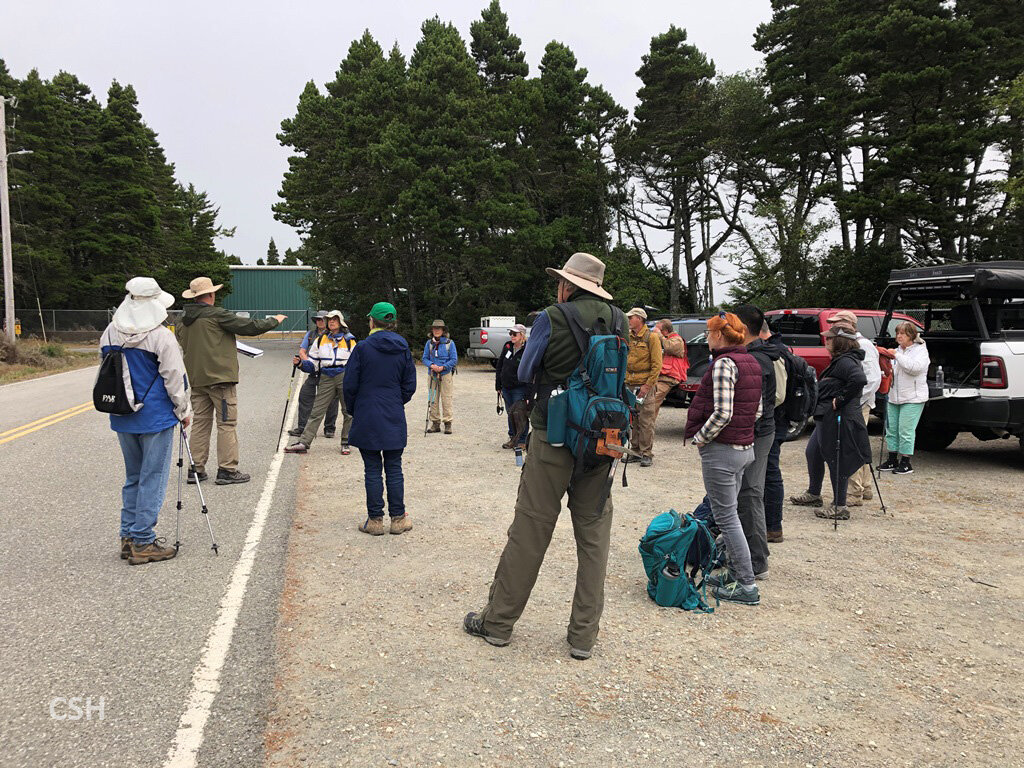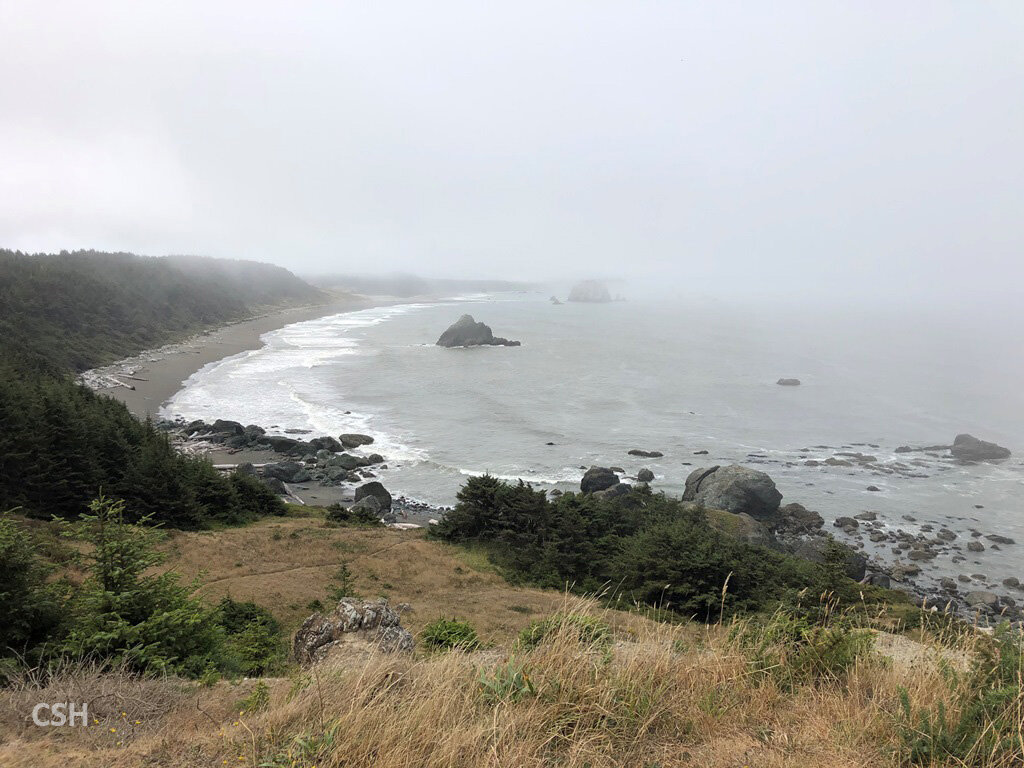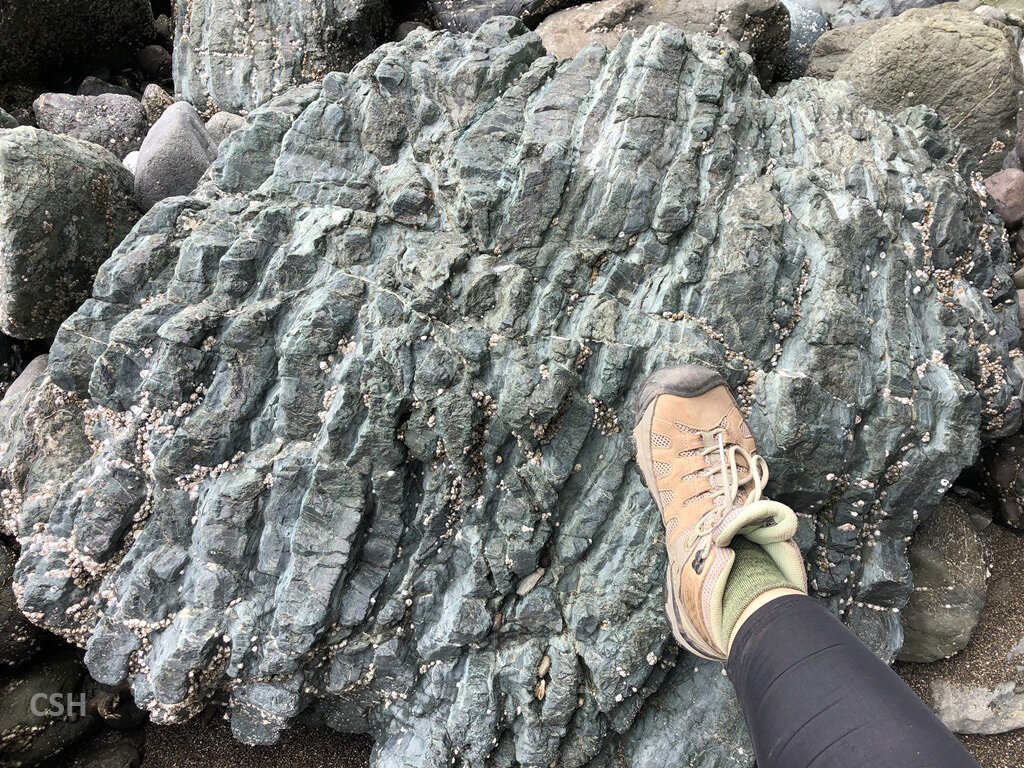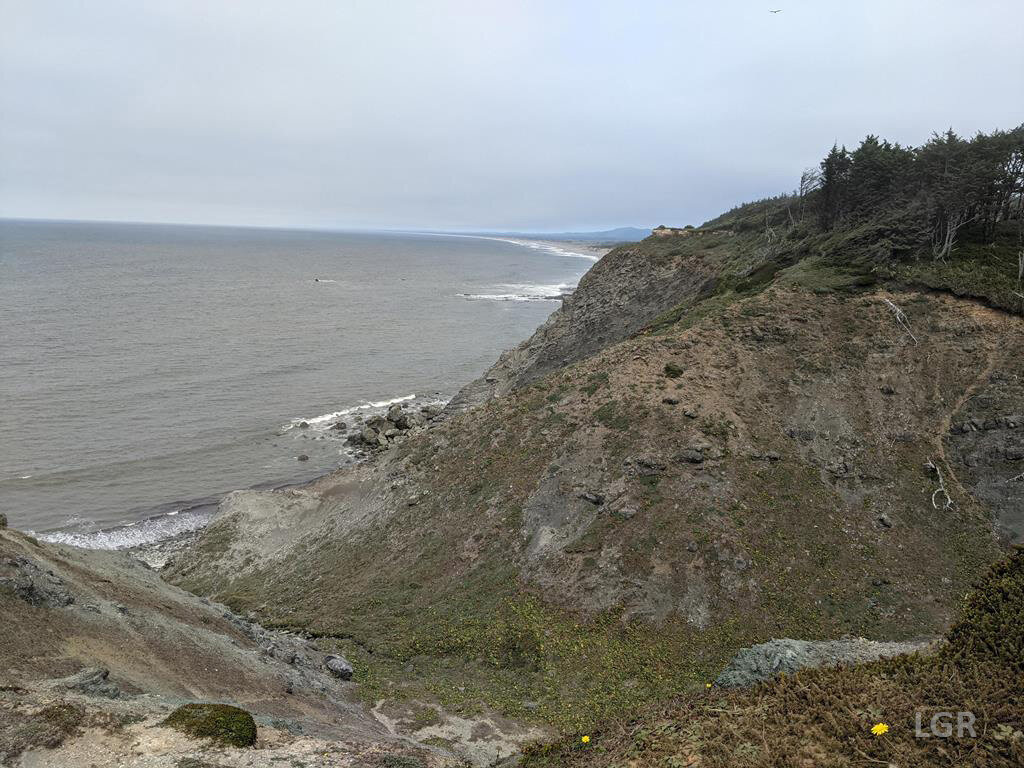Day 4 of the 2021 Coaledo Formation Field Trip
/Frank Hladky, a former DOGAMI geologist and geologic educator of the south central Oregon coast, met us on Sunday morning to do the last leg of the trip. We met near the airstrip in the Sixes/Cape Blanco area to hike out to Blacklock Point. Here we were completely out of the Tyee/Coaledo basin and into the Klamath Mountains, right atop the accretionary wedge built up by the subduction zone that has been in action since the Cretaceous. As I mentioned at the beginning of this article, the Klamaths were the source of a lot of the sediment deposited in the Tyee and Coaledo formations.
We were not disappointed by the rocks of Blacklock Point. On the seashore bluff and strewn about the beach were products of the subduction zone, a mélange of basalt, radiolarian chert, mudstone, blueschist, and serpentinite. Most of the rocks were black or green in appearance. These Jurassic age rocks had been sent down into the subduction zone, where they were squeezed, folded and cooked. One of the massive boulders of chert exhibited tight folding and faulting patterns.
Hladky told us that some of the minerals associated with the rocks found in subduction zones are the aluminum silicates kyanite, sillimanite, and andalusite, which all have the same chemical formula, Al2SiO5. Serpentinite is metamorphosed from peridotite or gabbro in the presence of sea water with relatively low temperature and pressure. Blueschist, a high pressure, low temperature product of basalt metamorphism, gets its colors from the two minerals, glaucophane and lawsonite.
Moving north to the terrace above Blacklock Point, the group looked north across a cove to the sandstone mined from the Cretaceous North Point by a Scottish immigrant named Blacklock in the early Twentieth Century. There are several buildings in San Francisco with facades mined from this brown sandstone. At the base of the cove are some fossiliferous layers. Hladky had brought many of his high school classes here to make geologic sections of the north hillside.
After returning from Blacklock Point, the group went to Cape Blanco and descended from the main parking lot to the beach north of the Cape Blanco headland. Boulders of blueschist could be found in the bed of the wash coming down the slope. In the water were outcrops of a black sandstone.
We headed back up the slope to the parking lot at Cape Blanco and said our farewells. It was a fabulous field trip and I don’t think any of the participants were disappointed. We’ll be looking forward to the interesting articles to come out from this research, and also looking forward to another great GSOC field trip!
Return to the beginning of the article.
Pictures from Day 4:














































































